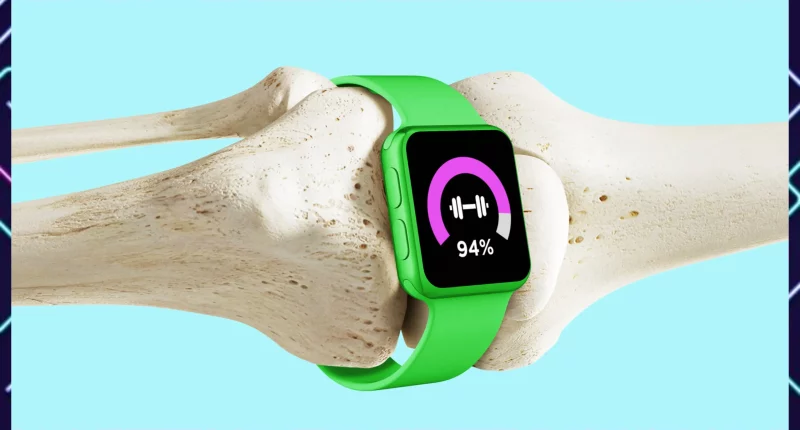Imagine you’ve just received the results from your follow-up bone density test, and a wave of anxiety washes over you. The doctor informs you that since your last exam three years ago, you’ve experienced a 4% decrease in spine density and a 2% decrease in hip density. With a serious tone, the doctor warns you about the risks of fractures associated with this ongoing bone loss and suggests starting a medication to address the issue.
If you’re like many individuals in this situation, your thoughts may spiral into a cycle of self-doubt and fear: “What am I doing wrong? This can’t be happening to me. I’m on a path to losing more bone and facing the possibility of fractures, maybe even a life-altering injury!”
Center for Better Bones encounters this fear daily. Many individuals find themselves distressed over minor fluctuations in their bone density results. However, it’s crucial to understand that these tests can often be misleading. In clinical practice, the variability and limitations of bone density tests are well-documented, and many people are unnecessarily alarmed by small changes.
So, take a moment to pause and breathe, and let’s explore a different perspective on these seemingly daunting changes in your bone density measurements. By reframing your understanding, you can empower yourself to take informed, proactive steps toward maintaining your bone health without the weight of undue fear.
Understanding Bone Density Measurements
Bone density measurements are often misunderstood, leading to misconceptions about their significance. Contrary to popular belief, these tests do not directly measure bone density; rather, they provide an estimate of the mineral content within the bone. Bone mineral content (BMC) refers to the amount of minerals, primarily calcium and phosphorus, present in a specific volume of bone. This distinction is crucial, as it highlights a fundamental limitation: the tests cannot assess bone strength, which is a more critical factor in evaluating bone health.
The long-held assumption that bone density correlates directly with bone strength has been challenged by emerging research. Notably, many low-trauma fractures, which are characteristic of osteoporosis, occur in individuals who do not exhibit a T-score of -2.5, the threshold typically associated with osteoporotic bone density. This reveals a significant gap in our understanding of bone health, emphasizing that density alone is not a reliable indicator of fracture risk.
Moreover, current testing methodologies are heavily influenced by bone area. This means that individuals with smaller frames or lower body weight may receive lower bone density readings compared to those with larger, heavier bones, regardless of their actual bone health. This discrepancy can lead to misdiagnosis and inappropriate treatment plans, further complicating the management of osteoporosis.
In practical clinical settings, the reproducibility of bone density tests is another area of concern. Studies, including those conducted by Dr. Susan Ott, have demonstrated that measurements can vary significantly even when taken in quick succession with the same equipment. Dr. Ott’s research involving 300 participants revealed that a change of more than 6% in bone mineral density is necessary to confidently assert a statistically significant difference. This variability underscores the need for caution when interpreting test results.
To learn more, check out Boron for Bone Health: Benefits and Possible Side Effects
Decreased Bone Density Implications
Decreased bone density has significant implications for overall health, primarily increasing the risk of fractures and the development of osteoporosis. Here are the key implications associated with decreased bone density:
1. Increased Fracture Risk
Decreased bone density leads to weaker bones, making them more susceptible to fractures, even from minor falls or injuries. Common fracture sites include the spine, hips, and wrists. Osteoporosis, a condition characterized by significantly reduced bone density, can result from ongoing bone density loss, heightening the risk of fractures.
2. Osteopenia and Progression to Osteoporosis
Decreased bone density is often classified as osteopenia, which is a precursor to osteoporosis. Osteopenia indicates that bone density is lower than normal but not low enough to be classified as osteoporosis. If not addressed, osteopenia can progress to osteoporosis, which is marked by even greater bone density loss and increased fracture risk.
3. Silent Disease
Both osteopenia and osteoporosis are often termed “silent diseases” because they typically do not present noticeable symptoms until a fracture occurs. Many individuals may be unaware of their decreased bone density until they experience a fracture, which can lead to significant pain and disability.
4. Impact on Quality of Life
Fractures resulting from decreased bone density can severely impact an individual’s quality of life. They may lead to chronic pain, decreased mobility, and a greater dependence on others for daily activities. This can also contribute to psychological effects, such as anxiety and depression, due to the fear of falling and sustaining further injuries.
5. Long-term Health Consequences
The long-term consequences of decreased bone density include potential complications from fractures, such as prolonged hospitalization, surgical interventions, and rehabilitation needs. Additionally, individuals with osteoporosis may face increased mortality rates following hip fractures due to complications like infections or blood clots.
6. Need for Regular Monitoring
Given the risks associated with decreased bone density, regular monitoring through bone density tests is crucial, especially for individuals over 50 or those with risk factors such as a family history of osteoporosis, low body weight, or hormonal changes. Early detection allows for timely interventions to prevent further bone loss.
Bone density test results: Ken’s story
Ken’s experience illustrates the complexities of bone density testing and its implications for bone health. At 56 years old, Ken, a small-boned and lightweight individual, sought assistance at the Center for Better Bones to enhance his bone health after experiencing multiple fractures in the past. Remarkably, he had not encountered any new fractures in the last five years. However, a recent recommendation from his new physician prompted the first bone density test in his medical history.
The results of this initial test revealed alarmingly low bone density, leaving both Ken and his doctor surprised. They suspected a possible error in the testing process, leading to a follow-up bone density test just 11 days later at the same facility. The results from these two tests, conducted in quick succession, highlighted a notable discrepancy:
The spine’s bone mineral density showed a 2% increase from the first test.
Conversely, the neck of the hip exhibited a 4.10% decrease.
This situation raises questions about the reliability of bone density tests. The findings suggest that Ken is not experiencing a genuine loss of bone in his hip while gaining density in his spine; rather, these variations likely fall within the test’s margin of error. This case underscores a broader concern within the medical community: while bone density tests may appear consistent under controlled conditions, their reproducibility in everyday clinical settings can be significantly compromised.
Foods to Increase Bone Density
To enhance bone density, incorporating specific foods rich in essential nutrients is vital. Here are key categories of foods that can help improve bone health:
1. Dairy Products are the primary source of calcium, crucial for bone strength. Options include:
- Milk: One cup provides about 300 mg of calcium.
- Yogurt: A cup of plain nonfat Greek yogurt contains similar calcium levels.
- Cheese: Varieties like cheddar and mozzarella are also rich in calcium.
Many dairy products are fortified with vitamin D, which aids calcium absorption.
2. Dark Leafy Green Vegetables are excellent sources of calcium and other bone-supporting nutrients:
- Kale, collard greens, and bok choy: These vegetables are high in calcium and vitamin K, which helps reduce the risk of osteoporosis.
- Broccoli: Another calcium-rich option, contributing to overall bone health.
3. Fatty Fish provide both calcium and vitamin D:
- Salmon, sardines, and mackerel: These fish not only contain calcium (especially when canned with bones) but also omega-3 fatty acids, which may support bone health.
4. Nuts and Seeds are rich in magnesium and phosphorus, both essential for bone health:
- Almonds: A small handful (about 1 oz) provides significant magnesium and calcium.
- Chia seeds and flaxseeds: These are also good sources of omega-3 fatty acids and calcium.
5. Beans and Legumes are packed with calcium, magnesium, and phosphorus:
- Black beans, kidney beans, and chickpeas: These legumes offer a hearty dose of bone-building nutrients. Soaking and cooking beans can help reduce phytates, which inhibit calcium absorption.
6. Certain fruits provide vitamins that support bone health:
- Citrus fruits: Oranges and grapefruits are high in vitamin C, which helps prevent bone loss.
- Figs: Fresh or dried figs are a tasty source of calcium and other nutrients.
7. Fortified Foods with calcium and vitamin D:
- Fortified plant milks (soy, almond, rice): These often contain calcium levels comparable to cow’s milk.
- Fortified cereals and juices: Look for options that provide added calcium and vitamin D.
8. Prunes (dried plums) have been shown to help improve bone density by slowing bone loss. They are also a source of potassium and vitamin K.
Read More: 7 Best Teas To Drink For Improved Bone Density and Osteoporosis
References
- Bone Health and Osteoporosis Foundation. (2023). Osteoporosis Diet & Nutrition: Foods for Bone Health. https://www.bonehealthandosteoporosis.org/patients/treatment/nutrition/
- WebMD. (n.d.). Super Foods for Your Bones. https://www.webmd.com/osteoporosis/ss/slideshow-superfoods-for-your-bones
- Harvard Health Publishing. (n.d.). Surprising Foods That Boost Bone Health. https://www.health.harvard.edu/womens-health/surprising-foods-that-boost-bone-health
- Better Bones. (n.d.). Small Change in Bone Density Test Results: Should You Worry? https://www.betterbones.com/testing/small-change-in-bone-density-test-results-should-you-worry/
- ScienceDirect. (n.d.). Bone Mineral Content. https://www.sciencedirect.com/topics/agricultural-and-biological-sciences/bone-mineral-content
- National Cancer Institute. (n.d.). Bone Mineral Density. https://www.cancer.gov/publications/dictionaries/cancer-terms/def/bone-mineral-density
- National Center for Biotechnology Information. (n.d.). Bone Health and Osteoporosis. https://www.ncbi.nlm.nih.gov/books/NBK56060/









